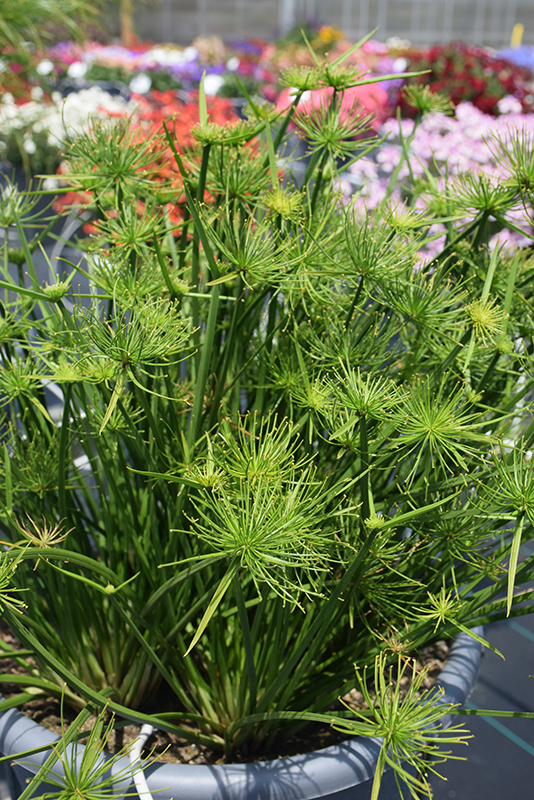|
|
|
| home | about us | loyalty program | products | directions | warranty | garden splendor ® | plant collector | landscaping | |
| Plant Finder | |
|
Queen Tut Egyptian Papyrus Cyperus 'Queen Tut' Height: 24 inches Spacing: 12 inches
Sunlight:
Hardiness Zone: (annual) Other Names: Dwarf Egyptian Papyrus Description: This variety is a semi-aquatic, grass-like plant producing towering green stems with green bracts; perfect for pond side planting or in moist gardens; doesn't mind being submerged a few inches Ornamental Features Queen Tut Egyptian Papyrus' attractive grassy leaves remain green in color throughout the season on a plant with an upright spreading habit of growth. Landscape Attributes Queen Tut Egyptian Papyrus is an herbaceous annual with an upright spreading habit of growth. Its relatively fine texture sets it apart from other garden plants with less refined foliage. This is a relatively low maintenance plant, and is best cleaned up in early spring before it resumes active growth for the season. It has no significant negative characteristics. Queen Tut Egyptian Papyrus is ideally suited for growing in a pond, water garden or patio water container, and is recommended for the following landscape applications;
Planting & Growing Queen Tut Egyptian Papyrus will grow to be about 24 inches tall at maturity, with a spread of 18 inches. When grown in masses or used as a bedding plant, individual plants should be spaced approximately 12 inches apart. It tends to be leggy, with a typical clearance of 1 foot from the water, and should be underplanted with lower-growing perennials. Although it's not a true annual, this fast-growing plant can be expected to behave as an annual in our climate if left outdoors over the winter, usually needing replacement the following year. As such, gardeners should take into consideration that it will perform differently than it would in its native habitat. This plant does best in full sun to partial shade. As an aquatic plant, it requires a suitable water garden environment and will benefit from special planting and ongoing care practices; consult one of our in-store experts for further details and instructions. This plant does not require much in the way of fertilizing once established. It is not particular as to soil type or pH. It is somewhat tolerant of urban pollution. This particular variety is an interspecific hybrid. It can be propagated by division; however, as a cultivated variety, be aware that it may be subject to certain restrictions or prohibitions on propagation. Queen Tut Egyptian Papyrus is a fine choice for the water garden, but it is also a good selection for planting in outdoor pots and containers. With its upright habit of growth, it is best suited for use as a 'thriller' in the 'spiller-thriller-filler' container combination; plant it near the center of the pot, surrounded by smaller plants and those that spill over the edges. It is even sizeable enough that it can be grown alone in a suitable container. Note that when grown in outdoor pots and containers, aquatic plants like this one will require a special growing environment that meets their requirement for consistent moisture. Characteristics
Applications
Features & Attributes
|
|

